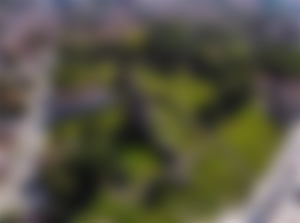
In the beginning, he was a courtier of Emperor Uroš. After that, he fought among other great men and became a Duke. The people loved him so much, they called him Emperor . And he left us a city, a colorful city - Krusevac.
Characterized by a very favorable geographical position, Kruševac and the Kruševac area were inhabited in prehistory. Archaeological finds speak of life in this area in the Neolithic era. However, the search for the origin of Kruševac takes us to the Middle Ages, to the time of Prince Lazar, who introduced it to history as his capital in the eighth decade of the 14th century.
In 1329, Duke Lazar Hrebeljanovic was born in the town of Prilepac, near Novi Brdo. Lazar was brought up at the court of Emperor Dušan, where his father Pribac was also the emperor's logotet (chancellor). During that time, Lazar acquired a higher education and Emperor Dušan appointed him as his setter (keeper of the seal). In 1353,Emperor Dušan married Lazar with his cousin Milica, the daughter of Prince Vratko, a prominent military leader from the Nemanijć lineage. It is not known exactly in which year Emperor Uroš awarded Lazar the title of prince and gave him the administration of Pomoravlje. It was most likely in 1366 when Vukasin proclaimed himself king. After the death of Emperor Uroš, soon after the Battle of Marica, Duke Lazar became the most powerful nobleman on the territory of the former Serbian Empire.

The legend of the origin of the city
For a long time, Duke Lazar and Duchess Milica researched where they would build a new capital. According to folklore, they spent one night on a hill above West Morava. That night, Stefan Nemanja appeared to Duchess Milica in a dream and told her to build a new capital right where they slept. So it was.
One legend says that Kruševac was named after the stone pear, a round river stone with which the city was mostly built.
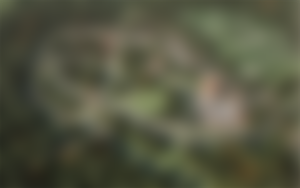
In 1371, Kruševac was built. Aware that his country is threatened by the Turks, Duke Lazar decides to build his court in the north, away from the main directions of the Turkish army's advance. He chose Kruševac, which, with its geo-strategic position, best suited its needs. Duke Lazar built the city, but the settlement existed even before that. The construction of the fortified city was approached in a hurry. For that purpose, Duke Lazar brought his best builders from Novo Brdo to Kruševac. It is assumed that the construction lasted up to two years, although at that time it was normal for the cities to be extended later.
The city itself was in a very good strategic position. From the south, in the direction of the Ottoman invasion, the city was protected by the area of Vuk Brankovic. To the west was the land of Tvrtko l Kotromanić. The fortress itself was first mentioned in 1381. It is assumed that it was built on the foundations of former fortifications. The city itself was surrounded by high walls, it had a plateau on which a court, a church and buildings were built in which nobles and courtiers lived. There were high observation towers on the walls, between the two belts of walls there were deep moats bridged by bridges on chains erected at night.
Right next to the city walls, a suburb was built - a civilian settlement. There were houses for housing, a square, a market, shops, lodgings. During the period of peace, Lazar's state prospered economically, so Krusevac imposed itself as a center of economic activities. Merchants from all over the Balkans met on its streets, and the people from Dubrovnik were the most prominent, coming to Lazar's capital, in addition to trade, for diplomatic activities.
From the charter issued in 1387, we learn that the Duke himself spoke about the city:
"In the glorious city, my lordship, Krusevac."

Today, the Lazarev grad Archaeological Park is located on that place. This archeological site represents the rest of the medieval city, which was built as the capital and military fortification. In the park there are authentic remains of the Don John Tower, the church of Lazarica from the 14th century, the remains of the prince's court, the monument to Prince Lazar and the National Museum.

The Lazarica Church is dedicated to Archdeacon Stefan, the patron of the Nemanjić dynasty. It was built in the period from 1377/78. to 1380 in honor of the firstborn son of Duke Lazarus, despot Stephen, heir to the throne.
During the renovation of Lazarica, after the liberation from the Turks, the church was painted again in 1843. The author of this fresco, the painter from Požarevac, Živko Pavlović, also made the iconostasis of the church, during 1844, before the visit of Prince Aleksandar Karađorđević to Kruševac. Karadjordje donated a bell to the church, which has been preserved to this day.
Inside the complex of Lazarev grad, the National Museum is located in a building erected in 1863 for the needs of the Kruševac High School.
It was adapted for the needs of the Museum in 1969
The museum fund contains about twenty-three thousand museals of natural, archaeological, ethnological, historical, cultural-historical and artistic character, whose historical step is over six millennia - from prehistory, through antiquity and the Middle Ages, through the period of Turkish domination and renewal of Serbian statehood. , until the middle of the 20th century.

Duke Lazar dies in the Battle of Kosovo on Vidovdan on June 281389, when he chose to, in his own words, as the legend says "Replace the kingdom of the earth with the kingdom of heaven"
Today, the monument to Kosovo's heroes, located in the center of Krusevac, keeps the memory of that event.
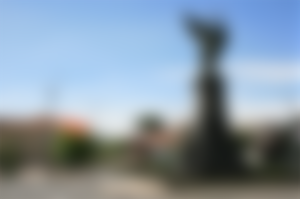
The monument to Kosovo's heroes is a symbol of Kruševac from Vidovdan in 1904, when it was solemnly unveiled by King Petar I Karađorđević on the occasion of the celebration of the centenary of the First Serbian Uprising. The cornerstone was laid by King Aleksandar Obrenović in the newly formed core of the city, on the occasion of the celebration of the 500th anniversary of the Battle of Kosovo in 1889. Thus, the space of the future center of Kruševac was determined.
The monument is the work of the famous Serbian sculptor George Jovanovic and is the most monumental work of national sculpture from the beginning of the 20th century. At the world exhibition in Paris in 1900, where sculptural elements were exhibited, the author was awarded the First Order Gold Medal.
The monument is in the shape of a marble pyramid, 6 meters high. It was performed in the spirit of French academicism in the neoclassical style with clear sculptural symbols.
The most significant is the composition at the top. Bosko Jugovic, the flag bearer of the Serbian army, fights wounded, with a broken sword, but does not drop the flag. In the dramatic last moments, Villa flies in and accepts the flag, symbolizing the continuation of the fight, and puts a laurel wreath on his head.
The figure of a guslar on the north side represents the duration of an epic struggle through the centuries. The girl on the south side symbolizes Serbia, which, with its outstretched hand to the south, calls for the liberation of the enslaved brothers, promising a wreath of glory to the transgressors.
The relief on the east side shows the epic communion of the Duke 's army, and on the west the scene of the assassination of the Turkish emperor Murat.
On the north side is the coat of arms of Nemanjić and 1389 - the year of the Battle of Kosovo; on the west - the coat of arms of Emperor Dušan and 1904 - the year of the unveiling of the monument; on the east - the coat of arms of Prince Lazar and the dedication to "Serbian Kosovo heroes", with a laurel wreath and a palm branch at the base, while on the south side is the new coat of arms of the Kingdom of Serbia from 1888 and the year of proclamation of Serbia as a kingdom - 1882.
The motifs on the cast iron fence around the monument represent stylized Kosovo peonies.
As part of the celebration of the 600th anniversary of the Battle of Kosovo, in 1989, a wreath was gilded on the monument, which the fairy puts on the head of Boško Jugović.
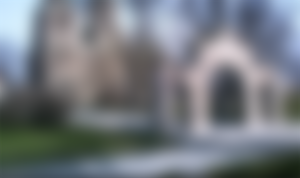
After the Battle of Kosovo, in 1389, the Turks briefly took power in the city. To Despot Stefan Lazarević, the son of Duke Lazar, Kruševac was the capital until 1405, when it was moved to Belgrade. However, the city itself does not lose its significance, because during the 15th century it was often "the subject of conquest". It is from the 15th century that the name colorful city originates, which was given to it by the Turks, or as it would sound in the original, aladža hisar. Kruševac got its name due to the fact that the fortress was built of different materials.
Next year we celebrate six and a half centuries since the founding of our city. This is my modest contribution to the preparations for the celebration of that great jubilee.



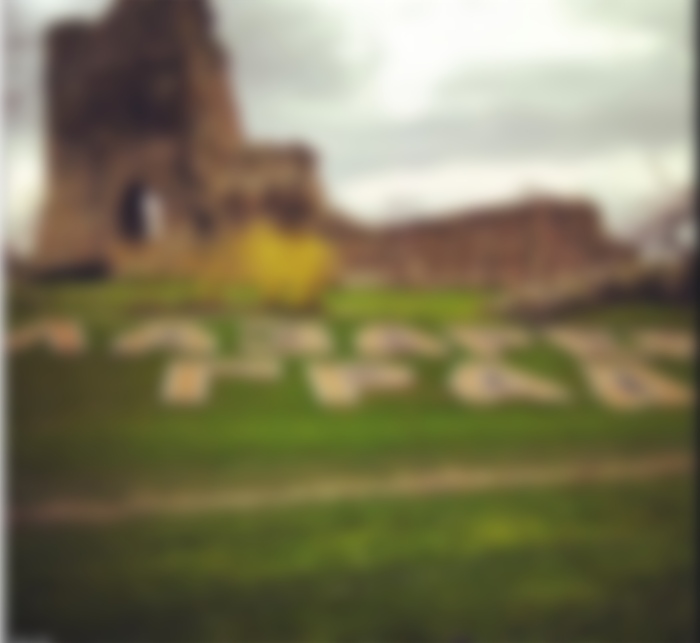


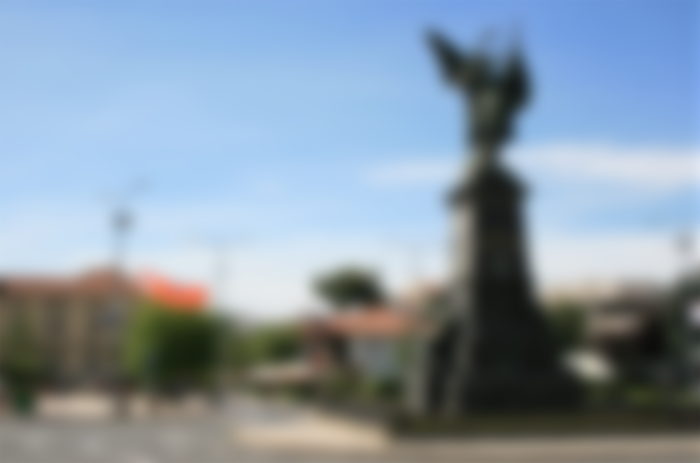
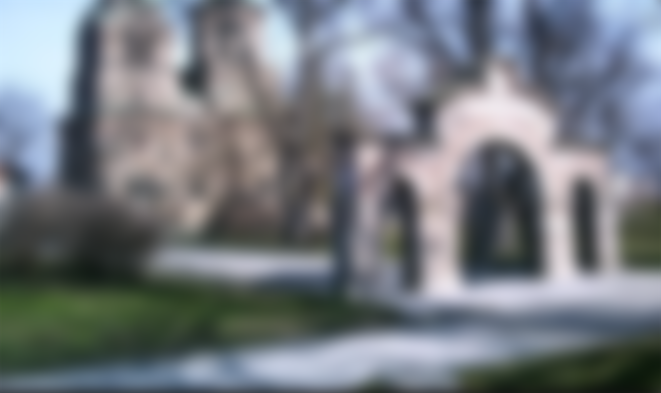
Lepo, sta reci. Bogati smo i previse, a da toga nismo svesni.